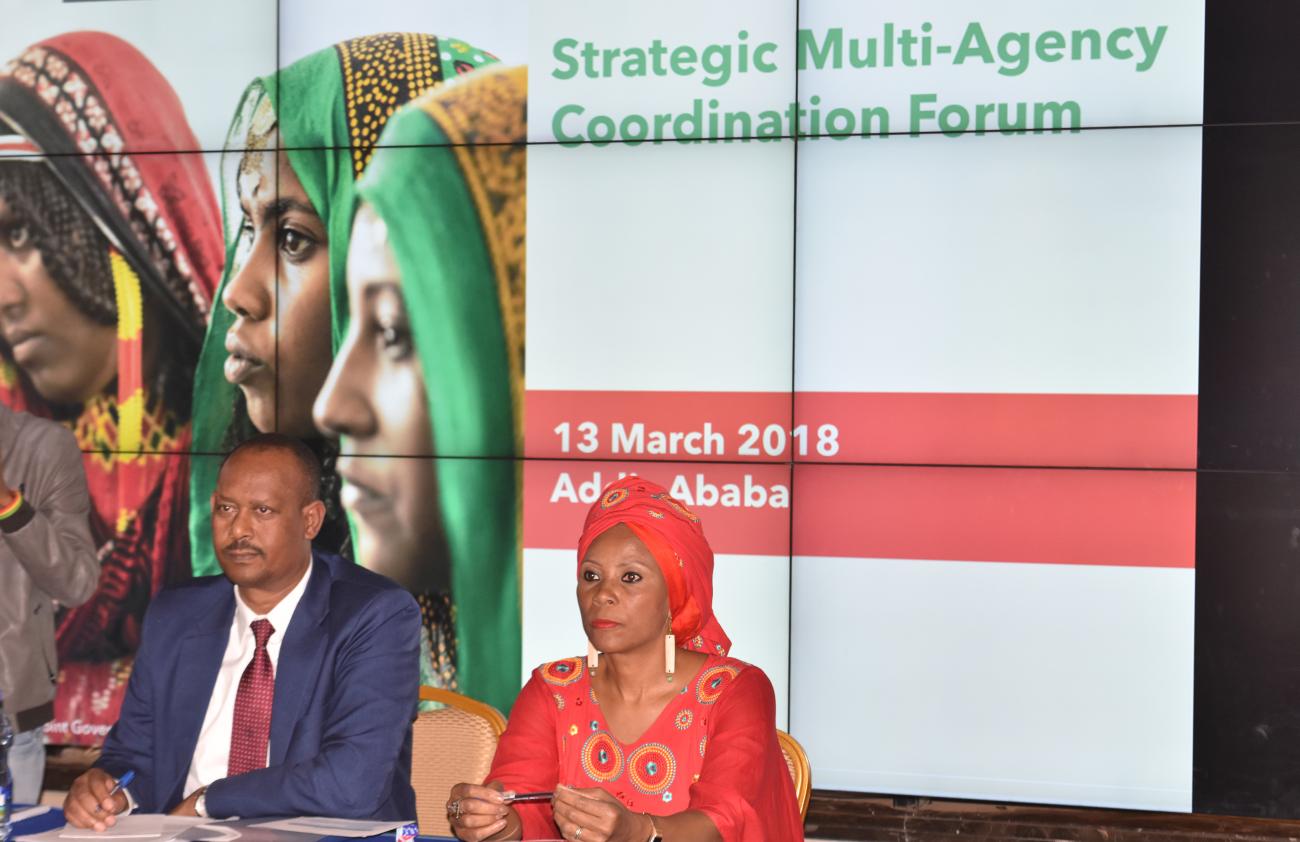US$1.66 billion urgently needed to address food and non-food needs for 7.88 million people

The Government of Ethiopia and humanitarian partners launched the Ethiopia Humanitarian and Disaster Resilience Plan (HDRP) for 2018.
The HDRP seeks US$1.66 billion to reach 7.88 million people with emergency food or cash and non-food assistance, mainly in the southern and south-eastern parts of the country.
“The Government of Ethiopia and partners are hopeful that through highlighting the need for longer-term investments, while advocating for timely response to current urgent needs, that affected and vulnerable communities can get the support they need to build back their lives following three years of back-to-back droughts,” says the UN Resident and Humanitarian Coordinator, Ms. Ahunna Eziakonwa-Onochie.
The 2018 HDRP presents prioritized plans in water and sanitation (WaSH), agriculture, relief food, nutrition, health, education, protection and shelter and non-food items in the affected areas. Out of the $1.6 billion sought for the 2018 response, $1.036 billion is required for relief food, $198.3 million for nutrition, $99 million for WaSH needs, and $94.9 million for shelter and other material assistance for the displaced.
“In the last two years, the Government of Ethiopia, with the support of international donors and humanitarian partners, was able to mount a robust drought response operation. Today, we need that partnership once again as continuing drought, flooding and conflict-related displacement has left 7.88 million vulnerable people in need of urgent assistance”, says Mr. Mitiku Kassa, Commissioner of the National Disaster Risk Management Commission (NDRMC). “The Government of Ethiopia has committed $138 million for drought response and rehabilitation of IDPs,” added the Commissioner.
Commissioner Mitiku further noted that, “The Government of Ethiopia is also committed to changing the recurrent requirements for large-scale humanitarian assistance through the implementation of a disaster risk management approach.”
The HDRP is presented around a three-pillared framework primarily highlighting immediate humanitarian plans and requirements, along with actions that will enable the current and future response, and reduce humanitarian requirements over the course of 2018 and for years to come.
Recent successive failed or under-performing rains mainly in southern and eastern parts of the country, an increase in conflict-related displacement in the border areas of the Oromia and Somali regions, and a lack of recovery opportunities, has left 7.88 million people in urgent need of relief food or cash assistance. Amongst the vulnerable there are 2.4 million households in need of livestock support; a projected 3.5 million cases of moderate acute malnutrition; 350,000 cases of severe acute malnutrition; 6 million people without safe drinking water; 1.2 million displaced due to conflict; and 500,000 displaced due to climate induced shock.(Addis Ababa, 13 March 2018): The Government of Ethiopia and humanitarian partners launched the Ethiopia Humanitarian and Disaster Resilience Plan (HDRP) for 2018. The HDRP seeks US$1.66 billion to reach 7.88 million people with emergency food or cash and non-food assistance, mainly in the southern and south-eastern parts of the country.
“The Government of Ethiopia and partners are hopeful that through highlighting the need for longer-term investments, while advocating for timely response to current urgent needs, that affected and vulnerable communities can get the support they need to build back their lives following three years of back-to-back droughts,” says the UN Resident and Humanitarian Coordinator, Ms. Ahunna Eziakonwa-Onochie.
The 2018 HDRP presents prioritized plans in water and sanitation (WaSH), agriculture, relief food, nutrition, health, education, protection and shelter and non-food items in the affected areas. Out of the $1.6 billion sought for the 2018 response, $1.036 billion is required for relief food, $198.3 million for nutrition, $99 million for WaSH needs, and $94.9 million for shelter and other material assistance for the displaced.
“In the last two years, the Government of Ethiopia, with the support of international donors and humanitarian partners, was able to mount a robust drought response operation. Today, we need that partnership once again as continuing drought, flooding and conflict-related displacement has left 7.88 million vulnerable people in need of urgent assistance”, says Mr. Mitiku Kassa, Commissioner of the National Disaster Risk Management Commission (NDRMC). “The Government of Ethiopia has committed $138 million for drought response and rehabilitation of IDPs,” added the Commissioner.
Commissioner Mitiku further noted that, “The Government of Ethiopia is also committed to changing the recurrent requirements for large-scale humanitarian assistance through the implementation of a disaster risk management approach.”
The HDRP is presented around a three-pillared framework primarily highlighting immediate humanitarian plans and requirements, along with actions that will enable the current and future response, and reduce humanitarian requirements over the course of 2018 and for years to come.
Recent successive failed or under-performing rains mainly in southern and eastern parts of the country, an increase in conflict-related displacement in the border areas of the Oromia and Somali regions, and a lack of recovery opportunities, has left 7.88 million people in urgent need of relief food or cash assistance. Amongst the vulnerable there are 2.4 million households in need of livestock support; a projected 3.5 million cases of moderate acute malnutrition; 350,000 cases of severe acute malnutrition; 6 million people without safe drinking water; 1.2 million displaced due to conflict; and 500,000 displaced due to climate induced shock.


